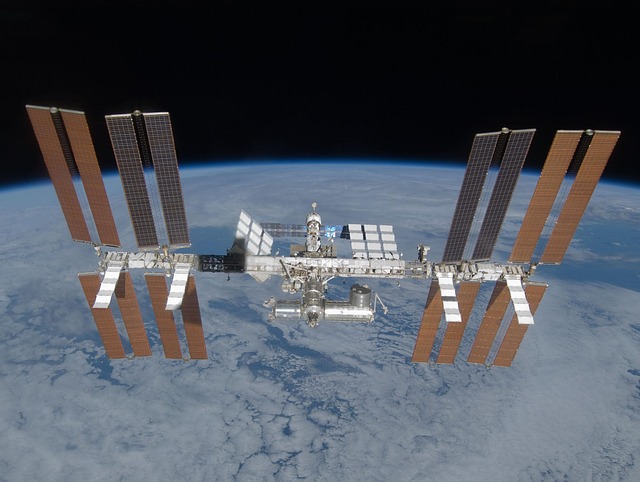Introduction
Long seen as a symbol of human aspiration and creativity is space exploration. Among the several innovative projects, the SpaceX International Space Station (ISS) is a lighthouse of worldwide cooperation and scientific exploration. Behind many of its contemporary developments, though, is another equally creative actor: SpaceX’s Leading reusable rocket technologies, dependable crew missions, and creative spacecraft designs, SpaceX has grown to be a regular collaborator in the continuous success of this orbital laboratory.
This blog will cover SpaceX’s contributions to the International Space Station (ISS), from its first test flights to its crewed trips with great cultural influence. By examining past events, technological developments, and future possibilities, we hope to show the vital part SpaceX has had in helping to shape the International Space Station (ISS) program and the direction of human spaceflight.
A Brief Overview of SpaceX and the ISS
Before analyzing the symbiotic relationship between SpaceX and the ISS, it’s important to understand these entities independently.
The International Space Station (ISS)
The five space agencies that cooperate on the International Space Station (ISS) are NASA (United States), Roscosmos (Russia), JAXA (Japan), ESa (Europe), and CSA (Canada). Functioning as a one-of- a-kind microgravity laboratory in its orbit around the Earth, it enables creative research in the domains of biology, physics, and technology while also preparing mankind for interplanetary travel over ninety minutes.
Since its launch in 1998, the International Space Station (ISS) has housed over 240 astronauts from 19 separate nations. Medical, materials science, and climate studies among other disciplines have benefited from the research these astronauts have done. Still, from a logistical aspect, the upkeep and supply of the International Space Station (ISS) has always been challenging, especially once NASA decided to stop the Space Shuttle program in 2011. SpaceX came to save us in this regard.
SpaceX: Revolutionizing Space Travel
Established in 2002 by Elon Musk, SpaceX had a grandiose goal: decrease the cost of space travel and finally enable human colonization of Mars. With its innovative work on reusable rockets, the company was the first private enterprise to dock a spacecraft with the International Space Station, therefore sparking the revolution it brought about in the aerospace industry.
SpaceX’s achievements include:
- The Falcon 1, the first privately developed liquid-fueled rocket to reach orbit (2008).
- The Falcon 9, a partially reusable rocket that drastically reduced launch costs.
- The Dragon spacecraft, designed for cargo and crew missions.
- The Starship, a next-generation spacecraft intended for deep-space exploration.
By combining innovation with cost-efficiency, SpaceX has fundamentally changed how space agencies approach orbital logistics.
Historical Context: SpaceX’s Entry into the ISS Program
NASA’s Commercial Orbital Transportation Services (COTS) Program
NASA required a dependable method of moving goods and personnel to the ISS once the Space Shuttle retired. Aiming to promote commercial spaceflight capabilities, the government turned to private enterprises under the Commercial Orbital Transportation Services (COTS) initiative.
SpaceX’s first official move into the ISS program came in 2006 when it received a COTS contract. SpaceX was obliged by the agreement to show that its Dragon spacecraft and Falcon 9 rocket could safely bring goods to the station.
Dragon’s First Flight to the ISS (2012)
When SpaceX’s Dragon capsule became the first commercial spacecraft to connect with the ISS during the CRS-1 (Commercial Resupply Services-1) mission, it created history on May 22, 2012. This landmark demonstrated how consistently private businesses might assist government space projects.
Since then, SpaceX has conducted over 30 resupply missions under NASA’s CRS program, delivering essential supplies, scientific experiments, and even new modules to the ISS.
Key Contributions of SpaceX to the ISS Program
SpaceX’s partnership with the ISS has yielded several historic accomplishments that go beyond cargo deliveries.
1. Commercial Crew Program (CCP): Restoring U.S. Human Spaceflight
One of the most important contributions that SpaceX made was in the context of NASA’s Commercial Crew Program (CCP), which was designed to reestablish the United States’ capacity to launch astronauts following the retirement of the Space Shuttle.
Crew Dragon: A Game-Changer for Human Spaceflight
SpaceX developed the Crew Dragon, a human-rated version of its Dragon spacecraft, designed to transport astronauts safely to and from the ISS.
Demo-2: A Historic Return to Crewed Launches
On May 30, 2020, SpaceX launched the Demo-2 mission, carrying NASA astronauts Bob Behnken and Doug Hurley to the ISS. This marked:
- The first crewed launch from U.S. soil since 2011.
- The first time a private company sent humans into orbit.
- A major step toward ending U.S. reliance on Russian Soyuz spacecraft.
The success of Demo-2 paved the way for routine crewed missions, with SpaceX now conducting regular astronaut flights under NASA’s CCP.
2. Supporting Scientific Research
SpaceX’s resupply missions have been crucial in maintaining the ISS’s scientific operations. The Dragon spacecraft has transported:
- Biological experiments (studying microgravity’s effects on human cells).
- Advanced materials research (developing stronger alloys and fibers).
- Earth observation instruments (monitoring climate change).
- Fresh food and supplies to sustain astronauts on long-duration missions.
Without SpaceX’s reliable cargo deliveries, many of these experiments would face delays or cancellations.
3. Reducing Costs Through Reusable Rockets
One of SpaceX’s most transformative innovations is rocket reusability. Traditional rockets were discarded after a single use, making spaceflight prohibitively expensive.
SpaceX’s Falcon 9 features a reusable first stage, which can land back on Earth or on drone ships at sea. This breakthrough has:
- Reduced launch costs by up to 60%.
- Enabled faster turnaround times between missions.
- Made frequent ISS resupply missions economically viable.
NASA has saved billions by partnering with SpaceX instead of relying on traditional aerospace contractors.
4. Technological Mastery: Falcon 9 and Dragon
SpaceX’s success in ISS missions stems from its cutting-edge engineering.
Falcon 9: The Workhorse of SpaceX
- Payload Capacity: Can carry up to 22,800 kg (50,300 lbs) to low Earth orbit (LEO).
- Reliability: Over 200 successful launches (as of 2024).
- Reusability: Some first-stage boosters have flown over 15 times.
Dragon Spacecraft: Versatile and Autonomous
- Cargo Dragon: Used for resupply missions, capable of carrying 6,000 kg (13,000 lbs) of payload.
- Crew Dragon: Designed for up to 7 astronauts, featuring:
- Touchscreen controls for manual docking.
- Advanced life-support systems.
- Emergency abort capabilities for crew safety.
5. Commitment to Safety
SpaceX has prioritized astronaut safety through rigorous testing:
- In-Flight Abort Test (2020): Demonstrated Crew Dragon’s ability to escape a failing rocket.
- Parachute Upgrades: Multiple tests to ensure safe splashdowns.
- Redundancy Systems: Backup thrusters, navigation, and life-support systems.
These measures ensure that NASA astronauts fly with the highest level of security.
Future Prospects: SpaceX’s Role in the ISS Beyond 2024
With NASA extending ISS operations until at least 2030, SpaceX will continue playing a vital role. Here’s what the future may hold:
1. Expanding Crewed Missions
SpaceX is expected to:
- Conduct more frequent Crew Dragon flights.
- Transport international astronauts (from ESA, JAXA, and private astronauts).
- Support longer-duration missions as NASA prepares for lunar and Mars expeditions.
2. Starship: The Next Evolution
SpaceX’s Starship, currently in development, could revolutionize ISS logistics:
- Massive Payload Capacity: Up to 100,000 kg (220,000 lbs)—enough to deliver entire new ISS modules.
- Potential Crew Transport: Could replace Crew Dragon for larger astronaut crews.
- Lunar and Mars Missions: May serve as a bridge between the ISS and future deep-space habitats.
3. Commercializing Low Earth Orbit (LEO)
As the ISS nears retirement, SpaceX is positioning itself to support private space stations:
- Axiom Space: SpaceX will launch modules for the first commercial space station.
- Space Tourism: Crew Dragon could ferry private citizens to future orbital hotels.
- Research Platforms: Companies may lease SpaceX rockets for microgravity experiments.
4. Supporting NASA’s Artemis and Beyond
SpaceX’s work with the ISS is a stepping stone for:
- Lunar Gateway: A space station orbiting the Moon, where SpaceX may supply cargo.
- Mars Missions: Lessons from ISS resupply will aid in developing interplanetary transport.
Conclusion: A Legacy of Innovation
SpaceX’s contributions to the ISS program go far beyond individual missions. By bridging the gap between public and private spaceflight, SpaceX has proven that commercial entities can drive progress in human space exploration.
From revolutionizing rocket reusability to restoring America’s crewed launch capability, SpaceX has cemented its place as a cornerstone of the ISS’s success. As we look toward the future—whether it’s private space stations, lunar bases, or Mars colonies—SpaceX’s innovations will continue shaping humanity’s journey beyond Earth.
The collaboration between SpaceX and NASA serves as a model for future partnerships, demonstrating how vision, technology, and determination can unlock the next era of space exploration. As Elon Musk famously said:
“You want to wake up in the morning and think the future is going to be great—and that’s what being a spacefaring civilization is all about.”
With SpaceX leading the charge, that future is closer than ever.

